Most of the parks where early Cowtowners played ball (see Part 1) and competed in track and field events no longer exist.
Here are four parks (all on the North Side) of yore:
Douglas Park
Douglas Park opened in 1895 as a privately owned park to serve the African-American community and was named after African-American abolitionist and orator Frederick Douglass (spelled with a double s), who had died earlier that year.
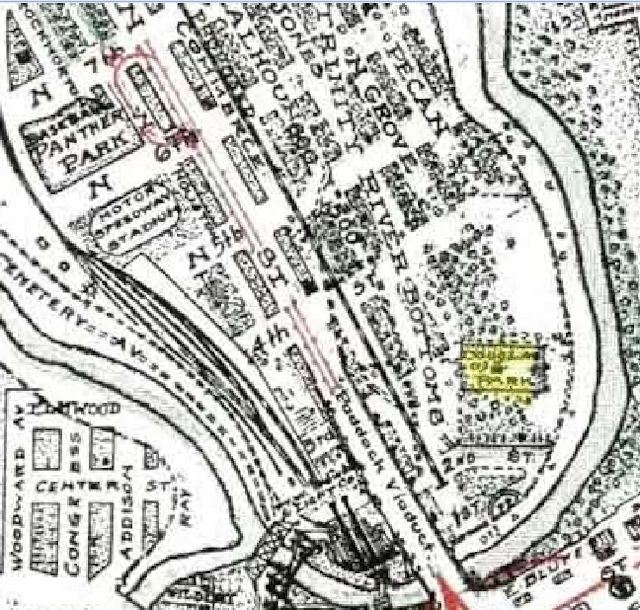 Douglas Park was located east of North Main Street in the Trinity River bottoms, an area prone to flooding and thus of little commercial value.
Douglas Park was located east of North Main Street in the Trinity River bottoms, an area prone to flooding and thus of little commercial value.
 Douglas Park was one of the few places where African Americans could play sports.
Douglas Park was one of the few places where African Americans could play sports.
McGar Park
On the west side of North Main Street was McGar Park, built by African-American saloonkeeper Hiram McGar.
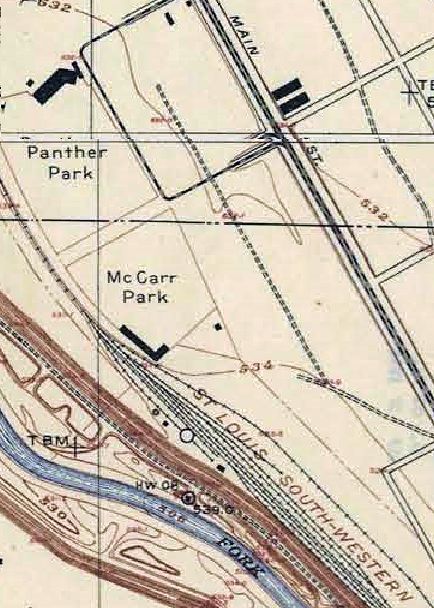 McGar Park was located just south of Panther Park.
McGar Park was located just south of Panther Park.
From 1902 to 1907 Prospect Park had occupied that property. McGar Park replaced Prospect Park about 1907.
 Hiram McGar built his park as a home field for his two African-American baseball teams: first McGar’s Wonders and then the Black Panthers.
Hiram McGar built his park as a home field for his two African-American baseball teams: first McGar’s Wonders and then the Black Panthers.
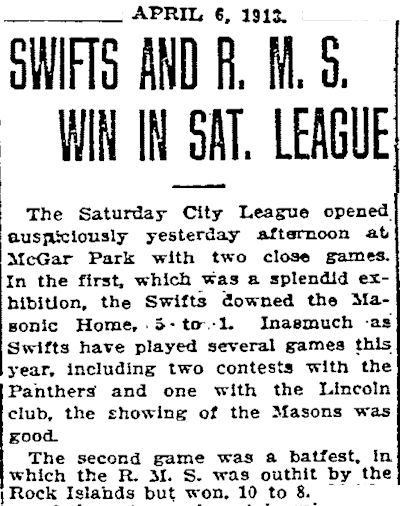 But white amateur teams also played at McGar Park. In April 1913 the Swift packing plant beat team the Masonic Home team, and the R.M.S. (Railway Mail Service) team beat the Rock Island team.
But white amateur teams also played at McGar Park. In April 1913 the Swift packing plant beat team the Masonic Home team, and the R.M.S. (Railway Mail Service) team beat the Rock Island team.
In 1919 a motordrome (labeled “Motor Speedway Stadium” on the map showing Douglas Park) was built on the site of McGar Park.
(Douglas Park and McGar Park are treated more fully in two posts about African-American parks.)
Butz Park

Butz Park, active from at least 1910, was located at North Main and Northeast 7th streets—close enough to the river that Butz Park, like Douglas Park, occasionally was flooded when the river rose.
 As it did in 1915. The oval photo shows goats seeking higher ground atop the Butz Park grandstand.
As it did in 1915. The oval photo shows goats seeking higher ground atop the Butz Park grandstand.
 Butz Park also hosted equestrian events.
Butz Park also hosted equestrian events.
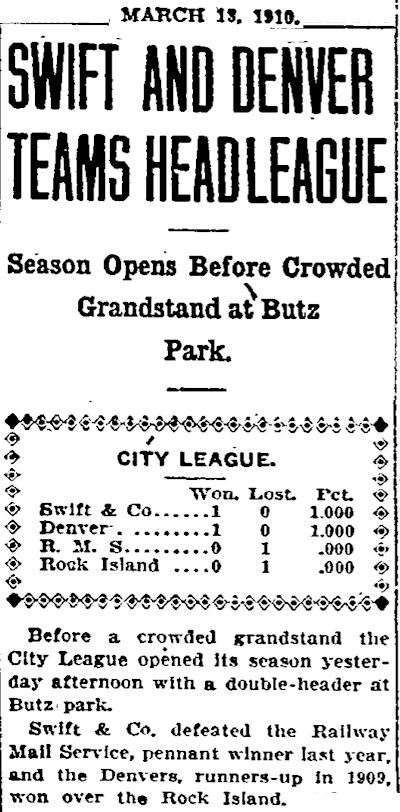 In the first half of the twentieth century businesses often competed in amateur baseball leagues. In 1910 the four teams of the City League (Swift, Fort Worth & Denver City railroad, Railway Mail Service, and Rock Island) played at Butz Park.
In the first half of the twentieth century businesses often competed in amateur baseball leagues. In 1910 the four teams of the City League (Swift, Fort Worth & Denver City railroad, Railway Mail Service, and Rock Island) played at Butz Park.
In 1912 four semipro Major City League teams—Stockyards; Armour; Libby, McNeill and Libby; and Twentieth Street Drug—played home games at Butz Park.
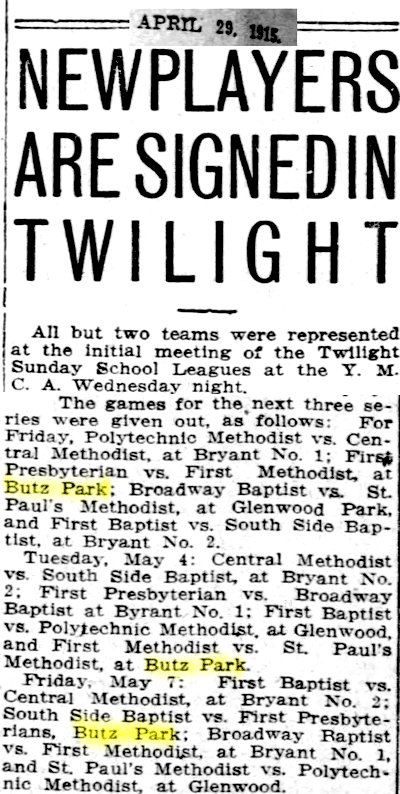 Church teams also played at Butz Park. (“Bryant No. 1” and “Bryant No. 2” refer to ballfields at Bryant School for Boys, which occupied the former campus of Fort Worth University after FWU closed and before the city built Fort Worth High School on the site in 1918.)
Church teams also played at Butz Park. (“Bryant No. 1” and “Bryant No. 2” refer to ballfields at Bryant School for Boys, which occupied the former campus of Fort Worth University after FWU closed and before the city built Fort Worth High School on the site in 1918.)
According to The Playing Grounds of College Football by Mark Pollak, TCU played at Butz Park in 1910 before TCU’s new campus was finished.
Butz Park may have been sacrificed in 1926 to make way for the new LaGrave Field at North Calhoun and Northeast 7th streets.
Worth/Louis J. Wortham Field
In 1918 the city bought Douglas Park and maintained it as a park for African Americans. But the patronage of Douglas Park declined so much that in 1920 the city sold the property to the electric company.
 That deal, too, was short-lived. In 1922 the city rebought Douglas Park with plans to develop the land as a municipal athletic field.
That deal, too, was short-lived. In 1922 the city rebought Douglas Park with plans to develop the land as a municipal athletic field.
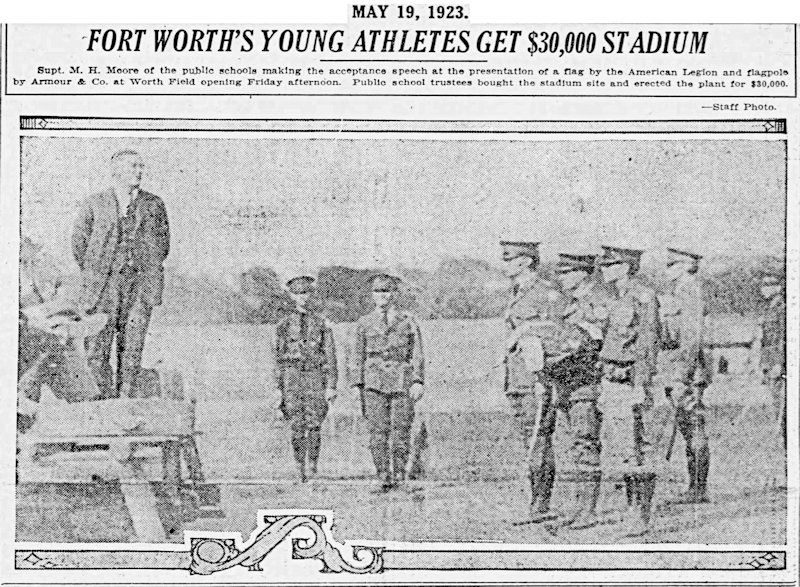 Worth Field opened in 1923. Schools Superintendent M. H. Moore spoke at the opening ceremony.
Worth Field opened in 1923. Schools Superintendent M. H. Moore spoke at the opening ceremony.
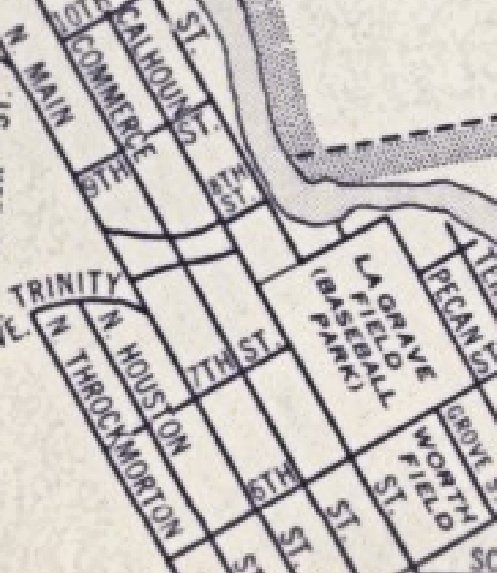 But the city built Worth Field farther north: just south of LaGrave Field on North Calhoun Street at Northeast 6th Street. Douglas Park survived into the 1930s and appears on some maps of 1940.
But the city built Worth Field farther north: just south of LaGrave Field on North Calhoun Street at Northeast 6th Street. Douglas Park survived into the 1930s and appears on some maps of 1940.
 In 1925 one thousand boys took part in the first annual “relay carnival” at Worth Field under the supervision of public schools director of physical education Evan Stanley Farrington.
In 1925 one thousand boys took part in the first annual “relay carnival” at Worth Field under the supervision of public schools director of physical education Evan Stanley Farrington.
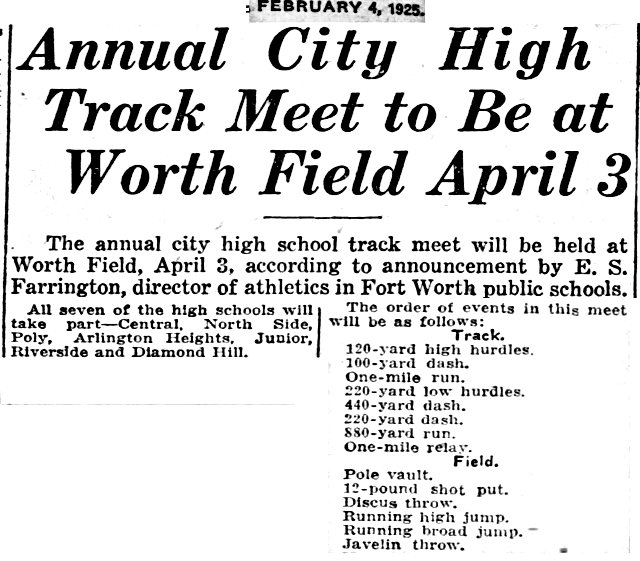 That same year Worth Field hosted a track and field meet.
That same year Worth Field hosted a track and field meet.
 The public schools also used Worth Field for baseball and football games.
The public schools also used Worth Field for baseball and football games.
 And in 1926 the Fort Worth Panthers held spring training at Worth Field as LaGrave Field was being completed.
And in 1926 the Fort Worth Panthers held spring training at Worth Field as LaGrave Field was being completed.
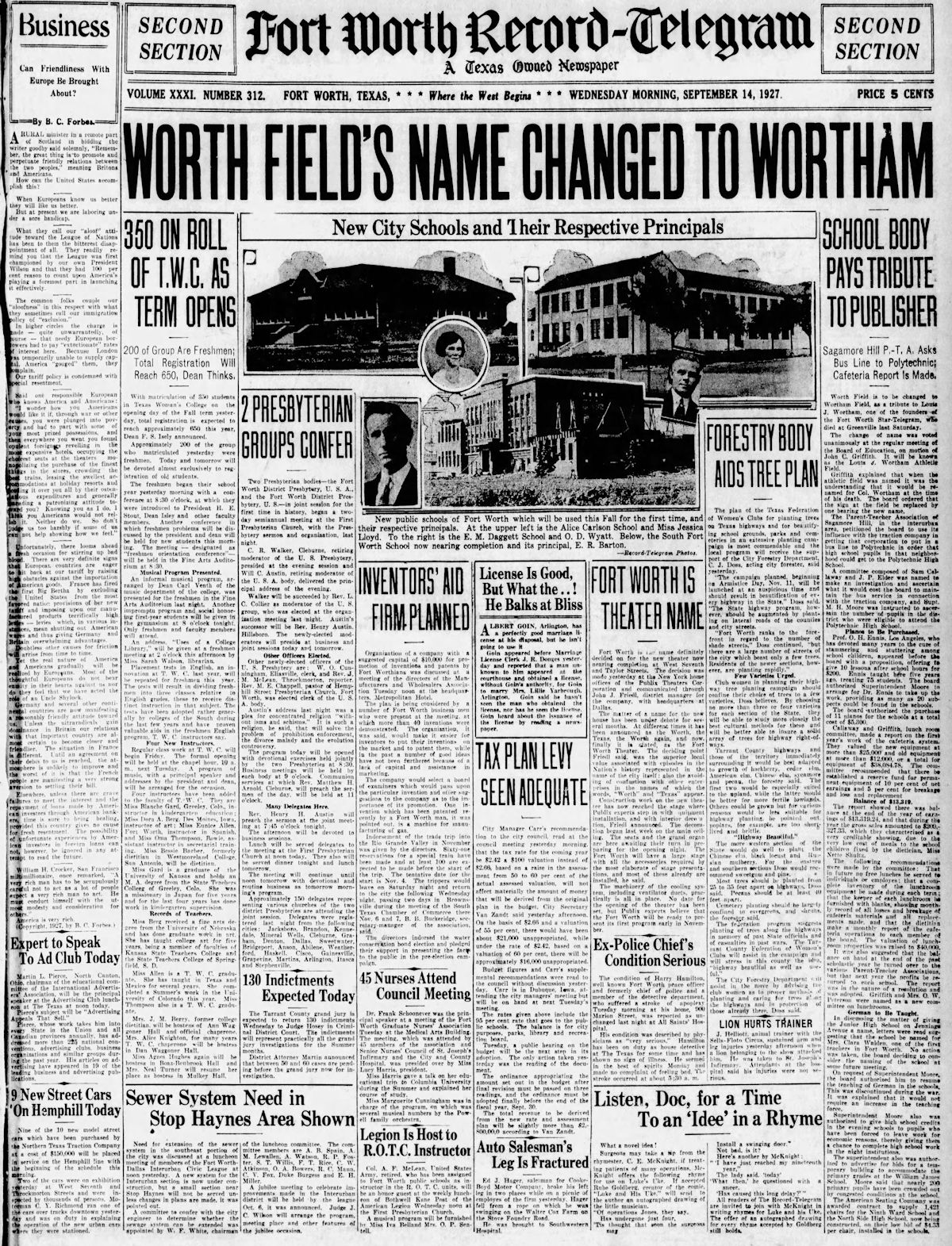 After former Star-Telegram president and state legislator Louis J. Wortham died in 1927 the Worth Field was renamed in his honor.
After former Star-Telegram president and state legislator Louis J. Wortham died in 1927 the Worth Field was renamed in his honor.
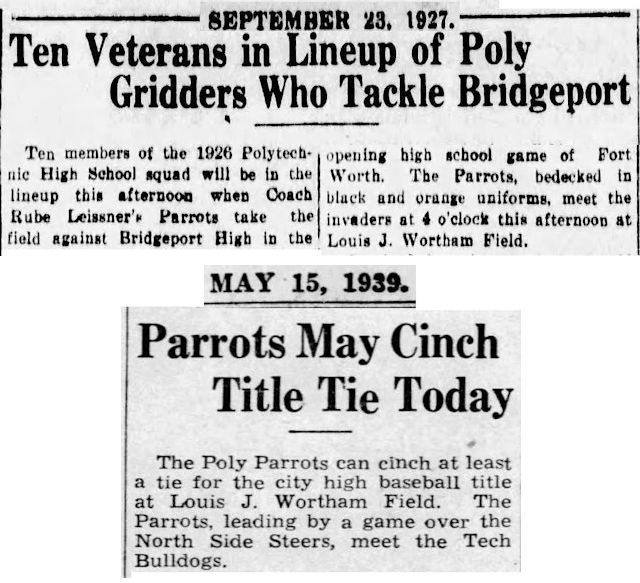 Louis J. Wortham Field hosted hundreds of sporting events from 1927 to 1940. But after Farrington Field opened in 1939, Wortham Field soon closed.
Louis J. Wortham Field hosted hundreds of sporting events from 1927 to 1940. But after Farrington Field opened in 1939, Wortham Field soon closed.
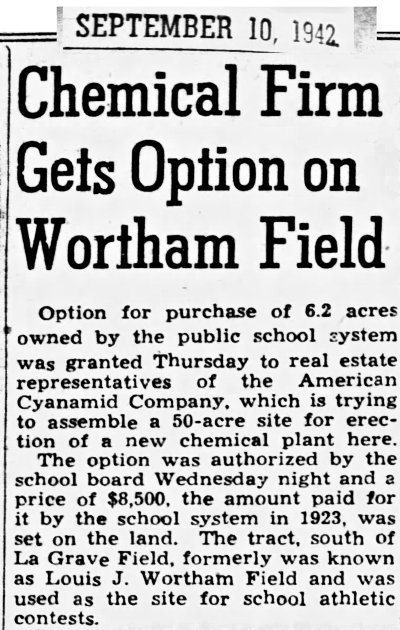 In 1942 the school district sold the Wortham Field property to American Cyanamid, a manufacturer of insecticides and fumigants.
In 1942 the school district sold the Wortham Field property to American Cyanamid, a manufacturer of insecticides and fumigants.
Everyone off the field.





